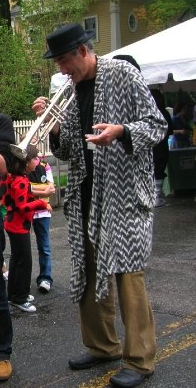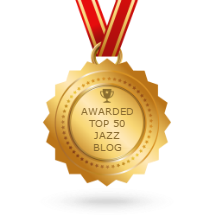.jpeg) |
| Herr Liszt |
Jazz pianists took full advantage of the piano's dynamic range, although there have always been widely different approaches to "touch." Early stride players like James P. Johnson, Willie the Lion Smith and Lucky Roberts were called "two-fisted" players. They were likelier to work the keyboard harder than those players coming through the more "modern" jazz vector of Earl Hines and Teddy Wilson, who put more emphasis on the right hand and, rather than striding (breaking up the chord in oom-pah fashion), using the left hand to just play the chord.
The bop pianists, Bud Powell, Tadd Dameron, Al Haig and company, were mainly occupied with right hand lines and block chords and tended to play in the mezzo forte to forte range most of the time. Art Tatum, Jaki Byard, Oscar Peterson, Jimmy Rowles and others continued to utilize both bop and stride approaches. Thelonius Monk and Count Basie used both stride and line approaches also, but were, in some ways, sui generis.
This post is not meant to be an omnibus catalogue of jazz pianistic touch, however, but to emphasize the more percussive end of the spectrum. We'll start with two of the premiere stride, or "Harlem" style pianists, contrasted with two seminal bop players.
To put things in perspective, we note that avant-gardists John Cage and company began working new terrain in the 1940's, "preparing" pianos with objects, dropping things into them and just plain banging on them.
Cecil Taylor was studying at the New England Conservatory in the late 40's and in a later interview said he listened daily to Ligeti and Xenakis, so I'd be surprised if he was not aware, as a student, of early work in this territory. In the late 1950's, his explosions opened up the door to a broader range of percussive playing on the piano.
In one of my old posts on McCoy Tyner and the use of pentatonics, I touched on was just how hard McCoy smites the keys. His bass pedal tones seem to threaten the continued existence of the piano's sound board. McCoy Tyner's earlier work had only hints of what he was to develop with John Coltrane's quartet. And, as I mentioned in that first post, the changes in his playing were, to some extent, the result of finding a way to match the high energy of the group.
Still playing today, Burton Greene is representative of some others in the mid-60's:
Don Pullen was not afraid to use both sides of his right hand.
Bobby Enriquez looks amazingly relaxed as he attacks the keyboard.
John Medesky has absorbed McCoy.
Ran Blake has a very wide dynamic range and drops bombs at unpredictable moments.
Pianists in Latin music play with a deep groove that calls for a lot of muscle tone. Here's a good sample with Charlie Palmieri:
Geri Allen and Joanne Brackeen put down the pedal on the distaff side. Here's Brackeen:
I sounded out the Jazz Trumpet Forum on Facebook and got a couple of ideas, so tip of the hat to those folks. It's an interesting thread, with many anecdotes (here). There were other pianists mentioned and, in fact, it's not unusual for pianists to utilize many of the techniques mentioned in this post. But this is, I believe, a pretty representative sample.


No comments:
Post a Comment